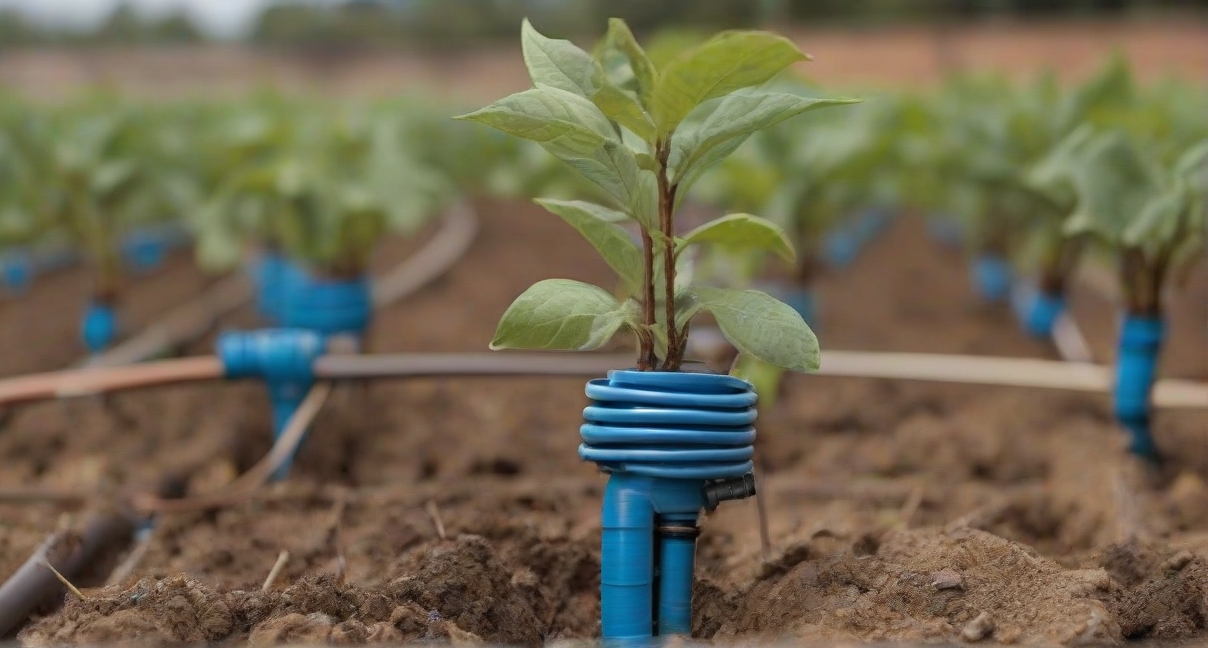- Background: Israel’s drip irrigation system is a pioneering agricultural technology that has played a crucial role in addressing water scarcity and enhancing agricultural productivity in arid and semi-arid regions. Developed in the 1960s, this system revolutionized traditional irrigation methods by delivering precise amounts of water directly to the plant’s root zone.
Key Components:
- Drip Irrigation Technology:
- Drip Emitters: The system utilizes drip emitters or micro-sprinklers to deliver small, controlled amounts of water directly to the base of each plant.
- Tubing and Pipes: Flexible tubing and pipes distribute water from the water source to the individual plants, minimizing water wastage.
- Water Management:
- Efficient Water Use: Drip irrigation significantly improves water-use efficiency by reducing evaporation and runoff, ensuring that water is delivered directly to the plants where it is needed.
- Tailored Irrigation: The system allows for precise control over the amount and timing of water delivery, catering to the specific needs of different crops.
- Fertilizer Application:
- Fertigation: Drip irrigation systems often incorporate fertigation, the simultaneous application of water and fertilizers. This ensures that nutrients are delivered directly to the plant roots.
- Soil Health:
- Preventing Soil Erosion: Drip irrigation helps prevent soil erosion by delivering water in a targeted manner, reducing the impact of surface runoff.
- Improving Soil Structure: Consistent, controlled watering contributes to better soil structure and overall soil health.
Impact:
- Water Conservation:
- Israel’s drip irrigation system has been instrumental in maximizing water use efficiency, crucial in a region with limited water resources.
- Reduced water wastage contributes to sustainable water management practices.
- Increased Crop Yields:
- Precise water and nutrient delivery directly to plant roots optimize growing conditions, resulting in increased crop yields.
- The system has enabled agricultural production in areas that were previously considered unsuitable for farming.
- Energy Savings:
- Drip irrigation requires lower energy inputs compared to traditional irrigation methods, as it operates at lower pressure and eliminates the need for extensive pumping.
- Environmental Sustainability:
- By minimizing water runoff and nutrient leaching, drip irrigation reduces the environmental impact on nearby ecosystems, such as rivers and lakes.
- Global Adoption:
- Israel’s success with drip irrigation has led to its widespread adoption globally, particularly in regions facing water scarcity and challenging climatic conditions.
Challenges and Considerations:
- Initial Investment:
- The upfront cost of installing a drip irrigation system can be a barrier for some farmers. However, the long-term benefits often outweigh the initial investment.
- Maintenance:
- Proper maintenance and periodic checks are essential to ensure the efficient functioning of the system and prevent clogging of emitters.
Conclusion: Israel’s drip irrigation system stands as a remarkable example of innovation in agriculture, offering sustainable solutions to water scarcity and contributing to increased global food production. Its success demonstrates the potential of technology to address pressing challenges and create more efficient and sustainable agricultural practices, especially in regions where water resources are limited.

